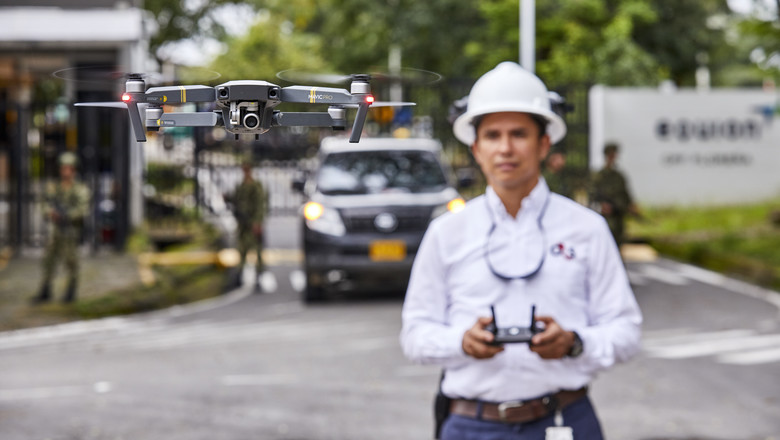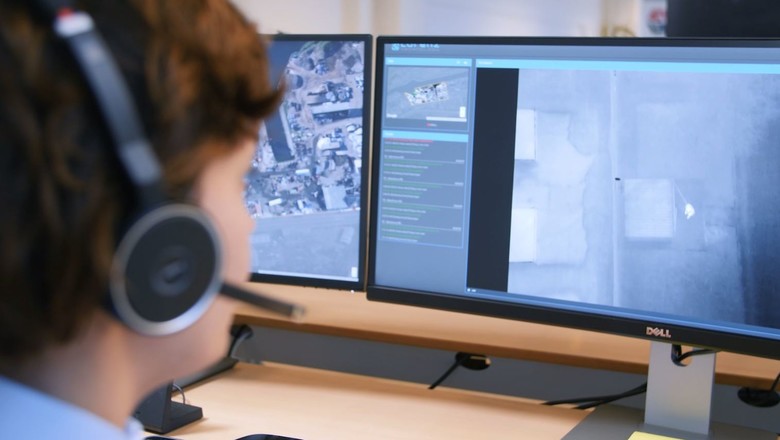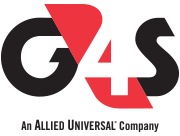
The future
of drones in security

G4S has high expectations for the future of drone technology and the business related opportunities that the technology brings.
In this context, the G4S Academy in Denmark has developed a guide, shared below, that can contribute to ensuring the technology is implemented in the best possible way, or in relevant circumstances, prevented entirely.
Drone technology
Many different types and sizes of drones exist, from fixed wing drones to single or multi rotor versions, and hybrids of these types too. Each drone has individual benefits, and when choosing a drone, it is important to consider its purpose.
For instance, a drone with eight arms/rotors (Octocopter) has a better payload capacity than a comparable drone with four arms/rotors (Quadcopter). If you want several cameras on one drone, you have to make sure that it can carry the weight and at the same time also maintain its stability when flying. Furthermore, if the drone is required to fly long distances, then you need larger batteries, which likewise will have an impact on the weight and the stability of the drone. Therefore, it is important to clarify your needs before investing in a drone.
A technology in development
The technology used for all drones is developing rapidly. The latest versions are packed with everything from the highest resolution cameras with live streaming to ‘sense & avoid’ technologies, ensuring that a drone does not fly into various objects along its route.
A “standard” drone solution roughly consists of motor, propeller/wings, GPS, altimeter, accelerometer, gyroscope, compass, data link (for communication), battery or batteries and remote control.
There is redundancy in all parts of the most recent drones -- from GPS to batteries. Technology that previously was earmarked for the military is now easily accessible to everyone, at an ever-decreasing price.
Drone software and application development are continuing, and today it is possible to manage a drone autonomously and automatically through a pre-programmed route, where the drone itself avoids any obstacles along the way.
When choosing a drone solution, it can be advantageous to choose a solution including software that makes it possible to establish a GEOfence in the flight zone of the drone, so it is restricted to only fly in the permitted area.
Furthermore, it is important that the data collected from the drone and camera are stored in a data environment that is General Data Protection Regulation (GDPR) compliant in regards to the rules for storing personal data and recordings. It is also essential to have a valid data processor agreement with your software provider.
Regulation and legal requirements
The rapid developments within drone technology are setting high demands for the legislation, aiming to ensure that new drones and systems can be used. Therefore, there continues to be much activity in the legislative field in regards to drones in Europe.
Today,regulations vary from country to country, but ”The European Aviation Safety Agency” (also called EASA) is working on common regulations within the EU and can be found on EASA’s website.
We are expecting that the development of the drone technology will be reflected in the regulations in the near future. Correspondingly, this will mean that we will experience new opportunities for the usage of drones.
Drones and Usage
When you are using drones as a work related tool, different factors will have an impact. The weather, in particular, has a big influence on whether or not your drone can be used.
Fog and heavy rain can be an issue due to the pilot’s limited visibility. The same issue applies to darkness. In this matter, however, there are several solutions, which would make the flight possible -- including thermal or infrared cameras and a light on the drone. Night flying requires a special permit and exam.
A drone is also sensitive to wind speed, which varies depending on the location of the drone. That means that the wind speed close to the ground is not necessarily the same as the wind speed 50 metres above the ground, and similarly the wind speed can change further in 100 metres altitude. The wind conditions may also change when flying close to buildings due to turbulence or wind tunnels. This is, amongst others, the reason why a drone pilot has to be prepared to disrupt a flight at any time, if the conditions at the location change in an undesired direction.
Using drones in G4S
G4S is currently working on a number of solutions where drones are used, such as the patrolling and supervision of harbour areas and construction sites, or the supervision and patrolling of large perimeters. G4S also uses drones for inspection tasks tailored to customers' needs and logistical tasks, such as loading and localisation of goods, trailers and containers for optimisation of flow and outdoor storage. Other examples include a security officer / drone security setup for inspections and response to security breaches, varied facility management tasks (roofs, drains, tall chimneys, cables, etc.), alarm patrol response (security officer patrol) and search of missing persons.
The use of drones can create both great security and business value. At the same time, drones can be used as part of a company's value chain, supporting the company's KPIs in quality, documentation, logistics and inspection.
If the legislative regulations allow, it is possible to supplement video surveillance with a camera-equipped drone. The drone has the capacity to perform flights according to pre-programmed time schedules, but it can also be managed remotely from a surveillance centre, if for instance, you would like a picture of an incident happening in the area at the exact time.
A wired drone
Another option is a wired drone. This drone is, at all times, provided with power through a cable. All controlling and picture signals are transferred through this cable. The drone has a limited reach, but it is very well suited as a substitute for a moveable camera mounted on a mast.
If the drone is located on the roof of a building, it will take off vertically from the rooftop, up to a reasonable altitude, where it will take pictures of the surrounding area. This can be done automatically according to a predefined time schedule or manually. When the drone is not in the air and is active, it will be hidden from its surroundings and from any nearby troublemakers.
Surveillance cannot solely depend on drones due to the fact that bad weather conditions can inhibit the drones from flying.
Drones should always be considered as an integral part of the overall total security management, and not used as a stand-alone security solution.

Anti-drone technology
When you open the door to new possibilities, you often also open the door for new risks. This is also the case when talking about drones - and the development and application of anti-drone technology is therefore essential in dealing with drones.
Anti-drone technologies are primarily focused on the protection of prisons, fence and perimeter surveillance, and protection of public buildings and embassies.
The market is full of actions, aiming to secure against unwanted drones - everything from net guns to jamming components. The challenge in this context is two-fold. Firstly, the regulations in some countries are not allowing jamming of signals in any way. The reason for this is that the law is aiming to protect all the wireless components surrounding us in our everyday lives. Society considers this of higher value than the fight against unwanted drones. Secondly, net guns are very limited in their range, and therefore, they are not very efficient when it comes to larger distances.
Warning systems
Warning systems is the best suggestion for protection against unwelcome drones. Most warning systems are based on radio frequency (2,4GHZ and 5,8GHZ). The systems listen for drone controlling signals (from remote control to drone) and video signals (from drone to remote control). The systems are often combined with video cameras that are able to detect and verify drones.
Warning systems are not a stand-alone solution. This means that the systems are not capable of keeping drones out of a given area, but able to inform about drones entering the area. For this method to have any real effect, there must also be some kind of response associated with the alert. For instance, this could be a security officer, who is able to follow the drone and to intervene at the right time.
Relevant functions in anti-drone solutions include real-time drone discovery and alarm, active response and protection and surveillance, recordings and event reports.
Conclusion
There is no doubt, that the usage of drones for various security tasks will develop in the coming years, and at G4S we work closely with drones and drone prevention technologies and solutions.
The legislation is falling behind the technology, and is therefore causing restrictions on the full potential of drones, but here too we are starting to see changes.
Our recommendation is to always use educated drone pilots in all drone related contexts, ensuring that the technology is applied correctly and according to all requirements, laws and regulations.
OTHER STORIES YOU MIGHT BE INTERESTED IN
.
.

